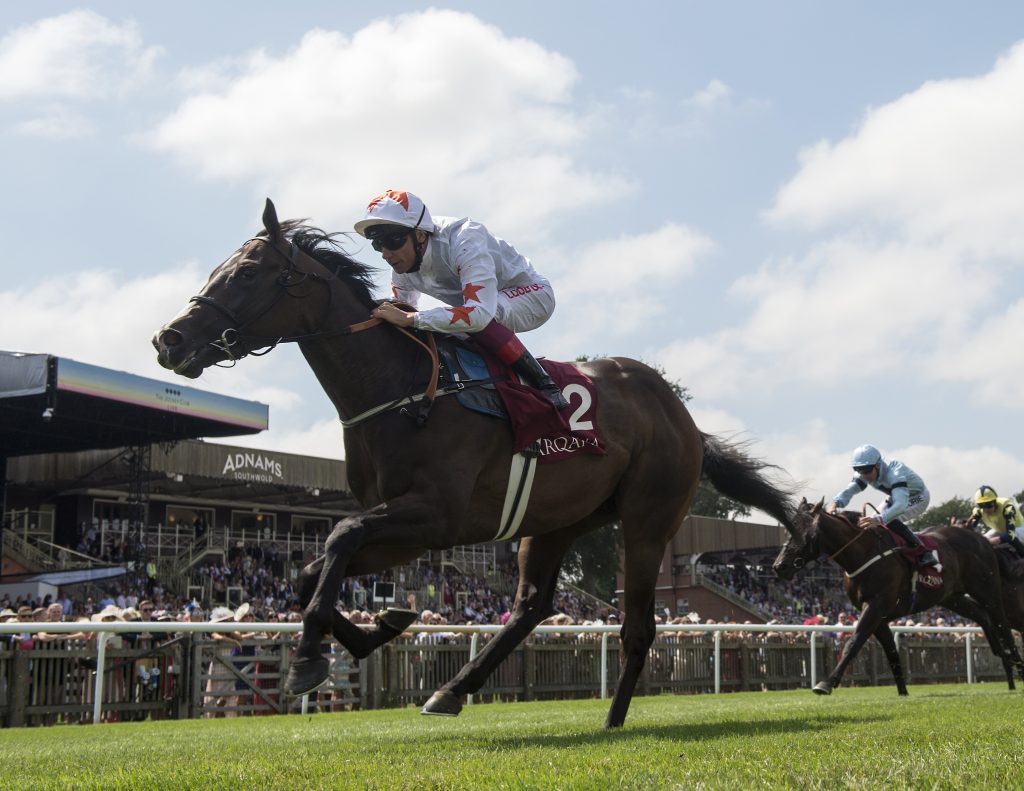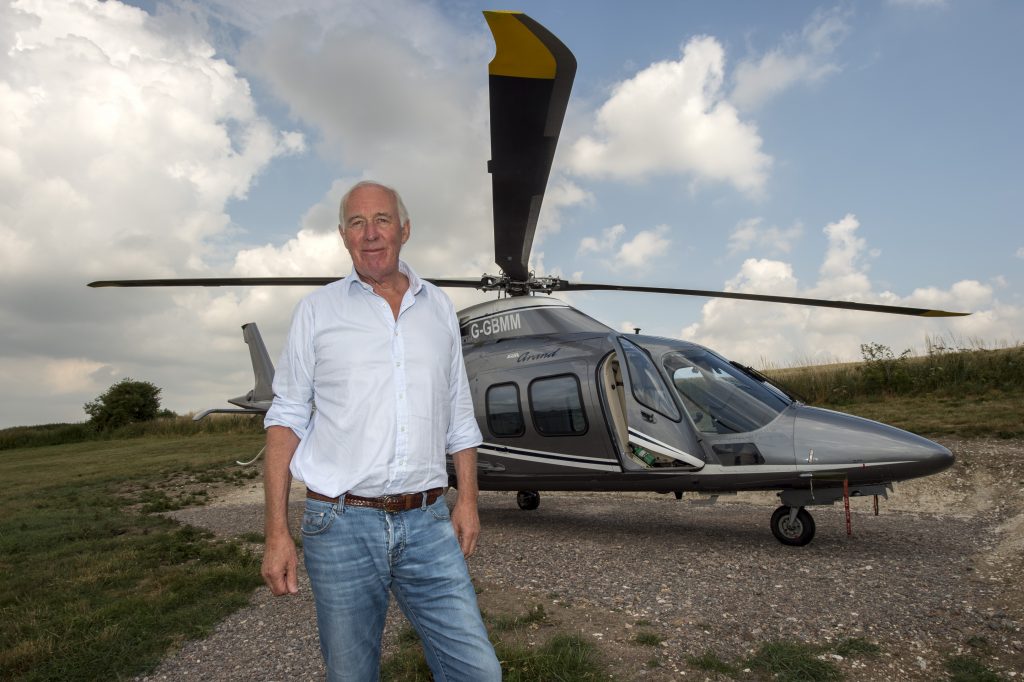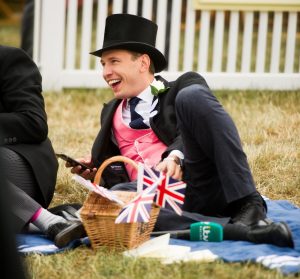After a successful spell training in Newmarket you decided to purchase the historic Manton training estate and moved in last March. Why did you want to leave HQ after four years?
I didn’t actually seek to leave Newmarket; I thrived on my time there and felt very privileged to be able to restore Sefton Lodge to its former glory.
However, when the chance to buy Manton came along I had to grasp the opportunity as these things don’t happen too often.
As Manton is quite close to my original base in Wiltshire, it felt a little bit like going home. But I have to say, we had great fun improving the yard, the house and building an extra ten boxes at Sefton Lodge.
How different is your current environment from the busy gallops of Newmarket that accommodate some 3,000 horses – and what changes and improvements are you making at Manton?
The two could not be more different. Pretty much everything is provided for you at Newmarket, which is one of the reasons I went there in the first place. So I could get up and running very quickly. While I have got the infrastructure here, not a lot has been done with the place over the last 30 years so it is another restoration project. We have started off virtually rebuilding the Fifield yard, which is a major project, as well as resurfacing the all-weather gallops and working with our agronomist on the grass gallops.
Originally, when the all-weather and grass gallops were installed they were irrigated and it’s been a godsend being able to use them at this stage of the season. I am also farming a substantial acreage here and that means I can grow my own straw and forage.
Compared with a very busy Newmarket, we don’t have to plan ahead and book in to use specific gallops. Here we can suit ourselves. Eighty horses is the ideal number, more than that and I think one loses touch. Brian Meehan is our neighbour in the Astor yard. He uses our gallops and it is really good to have him on the estate.
You trained your first NH winner in 1972, switched to the Flat, temporarily retired in the 80s, and now you are aiming to sit at the top table of your profession. What makes Flat racing so tantalising?
I think National Hunt sport is undoubtedly the most fun of all. However, there are drawbacks and I found it difficult to see how I could make a commercial success of it.
Whereas the Flat is based primarily on breeding and has a worldwide appetite and audience, and that is a great help in looking at a business which can be commercially viable. It has certainly proved to be the case for our operation over the last three years.
From the sporting point of view, on the Flat the thrill of seeing horses galloping at such pace and finishing through the final furlong at full speed is very special. For me, it’s a different mindset compared with National Hunt racing.
Compared with a very busy Newmarket, we don’t have to plan ahead and book in to use specific gallops
Originally, I didn’t understand the Flat and people used to facetiously tell me, ‘Blink and you’ll miss it’. It is exciting trying to find the optimum distance for each individual, not necessarily based on pedigree, as you can also look at the individual and its build, which might suggest staying a longer distance. Getting that right is a fulfilling part of the business.
If I could have a yard full of milers that stepped up to ten furlongs or even dropped back to six or seven you’d have all that flexibility, which would be exciting. As far as jumpers are concerned, we would have one only if it was a good Flat horse we thought might have a chance in the Champion Hurdle.
You have said in order to rub shoulders with the best you must have a “good buying team” – your shrewd purchases include Aclaim, Eminent, Wilamina and Advertise. How do you approach the sales, what do you look for and who advises/buys for you?
We select and buy the yearlings ourselves. I head up the buying team, very much supported by my son-in-law Dermot Farrington, who is a bloodstock agent, and my son Freddie, who is my assistant trainer. We have strict guidelines that we adhere to when selecting and purchasing the yearlings.
Suffice to say, we value the horses and don’t get carried away with auction fever. You have to be very disciplined and set yourself a price. We buy speculatively and then find owners, if possible with breeding interests because we are always trying to make stallions or broodmares.
We buy stock as opposed to pedigrees; first the individual then we look to the page. And we are always disciplined on price.
The thrill of seeing horses galloping at such pace and finishing through the final furlong at full speed is very special
Is there a plan in place for Freddie to take over the reins one day?
There isn’t a plan at the moment, but I would certainly hope that would be the case.
Freddie was involved in Ladyswood Stud, which is a stud we used to have in Wiltshire and sold when we moved to Newmarket.
Advertise, a son of Showcasing bought for £60,000, fulfilled his Royal Ascot promise with an impressive victory in Newmarket’s Group 2 July Stakes. What does the future hold for him?
Of course we were delighted with his Newmarket performance and hope he will prove himself a top two-year-old performer. The plan is to run in the Phoenix Stakes at the Curragh on August 12, sticking to six furlongs, though I do think he is capable of staying seven this year. Hopefully in the Dewhurst at Newmarket this autumn.
Then perhaps going up to a mile in the 2,000 Guineas next season. But at the moment we are taking it a step at a time.

Exciting two-year-old Advertise won last month’s July Stakes at Newmarket. Photo: George Selwyn
Advertise has come out of the Newmarket race very well and I don’t want to overdo him as I think he’ll be a smashing three-year-old.
The one thing that makes him stand out from all the others is that he is just so straightforward. One of those horses that never lets you down; intelligent, lies down and goes to sleep in his box, gets up, does his work and eats his food.
He is the perfect horse at this stage. From day one he has risen to the top and fulfilled every dream we’ve had so far.
You were involved in hunting, as Master of Foxhounds, and have played polo around the world. How did you become involved in horses and where did your desire to train thoroughbreds come from?
I have ridden from an early age and always been around horses. I suppose it was a natural progression to train racehorses and fulfil the ambition when the time came to give up my other activities. Racing has always been an underlying passion for me but I was prevented from participating as a rider by my weight.
Training was always something I was waiting to do. My father owned a number of jumpers. I was Master of Foxhounds at West Somerset Vale and the Eggesford in deepest Devon. I gave up playing polo three years ago but both my sons, Freddie and George, play.
As Chairman of Hadleigh Partners – a private equity firm with interests primarily in timber and property – do you find racing an escape from the high pressures of the business world?
Without question, I find life much more pressurised and stressful training racehorses than it ever was in the business world. Further than that, it must be one of the most difficult professions to succeed in because it encompasses so many different outside influences and pressures. It makes business a doddle.
The variety of people you come across from contrasting backgrounds in the racing world provides a kaleidoscope of different ideas and thoughts. Racing certainly keeps the old brain going with endless problems to solve.
The ultimate aim is to be successful, but nothing is straightforward and that provides the challenge.
Advertise has come out of the Newmarket race very well and I don’t want to overdo him as I think he’ll be a smashing three-year-old
You are a fully qualified helicopter pilot. How much do you fly and do you often go by helicopter to the races?
I have been flying for a long time and it is not a luxury. It is the only practical way I can get to where I need to be on a daily basis.
My commercial headquarters are in London and the racing headquarters are now Manton. And having runners most days during the Flat season and also requiring to be in the yard – which is terribly important – puts a lot of strain on your time.
I fly the helicopter myself, almost every day. It is a huge part of the way I operate and has been for many years.
While in Newmarket you purchased the local Snailwell Stud from the Joel family. How do you see the future of the stud fitting into your plans?
Snailwell Stud was very much part of the operation when I trained at Newmarket. We had the ability to spell horses there, break them, and our breeding operation was there as well.
However, having moved to Manton it is no longer an integral part of our bloodstock operation.
So, reluctantly, I shall be putting Snailwell Stud on the market and bringing the whole breeding operation back to Manton. I shall keep a few broodmares here and there is enough room for spelling and breaking.

Trainer and fully qualified pilot Martyn Meade with his helicopter at Manton in Wiltshire. Photo: George Selwyn.
Having been very hands-on in the boardroom at the top of the business world, you must have a view on the best way forward for racing…
Generally racing is very well run in the UK. However, there is an increasing tendency to make changes just for the sake of making changes and it’s this I find rather irritating.
In my opinion, a good example is the new novice arrangement, whereby a winning two-year-old is given a 7lb penalty and then if it wins again, a 14lb penalty. Inevitably this is going to stop horses unless they are up to a rating of around 90.
Lumping on a horse you’ve got ready to win first time seems unreasonable, especially if it’s only a 70-rated youngster. Why change the system when it was working perfectly well before?
Also, there is such a lot of racing now I am strongly in favour of evening racing finishing by 8pm.
When you consider the horses and the staff, who are providing entertainment seven days a week, they should not have to leave the racecourse as late as 10pm. It’s just not on. Particularly when they have a long journey in front of them and then are up for work very early the following morning.
Confiding is a progressive two-year-old with a bright future. He won first time at Newbury
Which horse has supplied your most exciting/memorable moment to date?
The standout for me has to be my first Group 1 with Aclaim in the Prix de la Foret at Chantilly on Arc day last year. That was the pinnacle.
After all, that’s what everyone strives for – great excitement and lifelong memories. A great milestone one strives for and has to pass as a trainer. But then of course it gives you the taste for more and more.
It was the last race of the day at Chantilly but celebrations started there and went on well into the early hours when we got home.
You would seem well placed to offer a view on Brexit and the uncertainty it has created for racing and business…
I am very concerned that we have been put in this position in the first place. And the situation appears to get even worse when there seems to be very little clear strategy for the future.
However, historically these crises are generally resolved by the hardworking British public who adapt to whatever disastrous outcome the politicians negotiate.
It is so unclear at this stage I cannot have a strong view on the matter, other than the fact we’ll all pull it around somehow if that’s the will of the people. The British public have great resolve.
Can you give us a two-year-old and older horse to follow this autumn?
Confiding is a progressive two-year-old with a bright future. He won first time at Newbury and that performance could be analysed as being as impressive as Advertise’s winning debut there. Confiding may go to Goodwood and hopefully on from there.
Wilamina is a real favourite of mine and a model of consistency. A lovely mare – if only she could win a Group 1. She has been knocking on the door and with a bit of soft ground in France later on, she might be able to do it.



